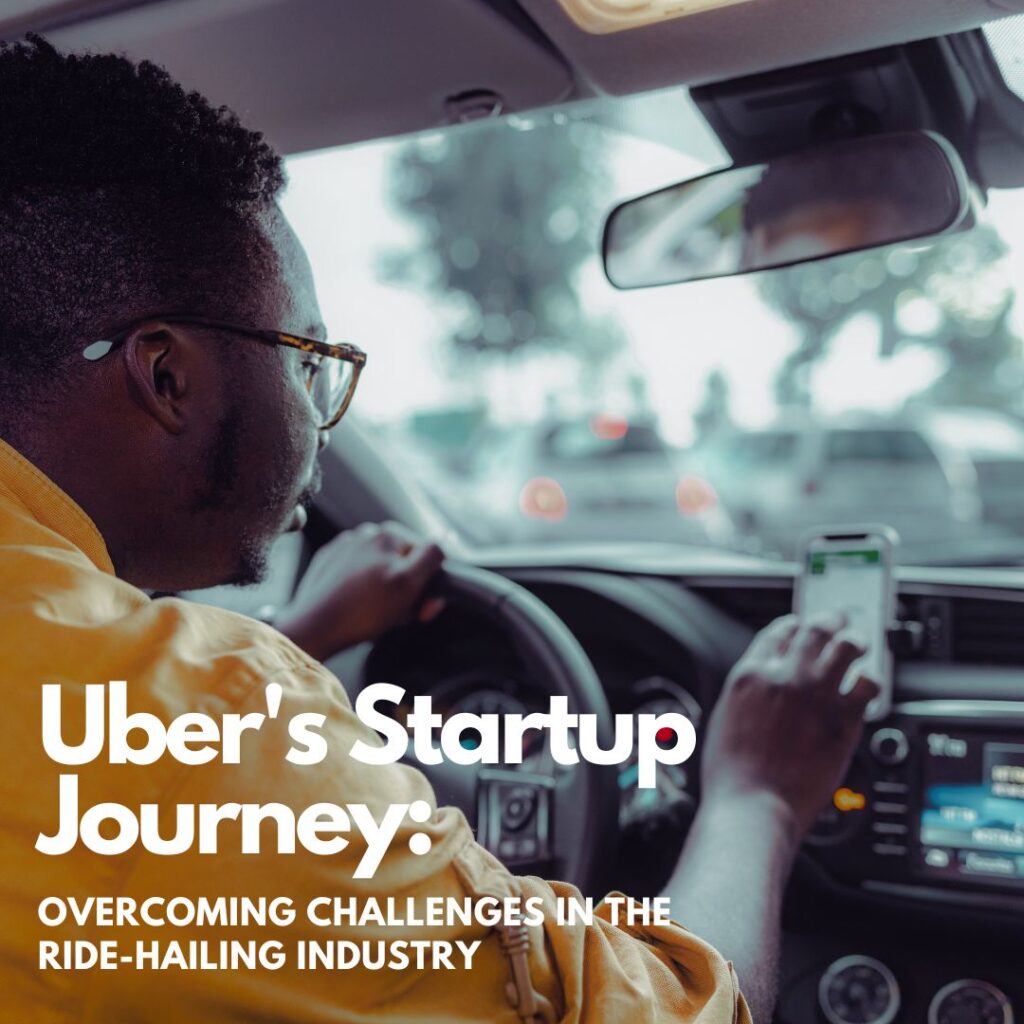In a world constantly driven by innovation and entrepreneurship, the journey of a startup founder is seldom smooth sailing. This includes Uber, the pioneer in the ride-hailing industry, famous for revolutionising the way people travel around cities since its establishment in 2009. In this case study, we will navigate the maze of challenges that Uber faced during its startup journey. Read through as we explore the lessons learned and the invaluable experience-driven strategies that have shaped their entrepreneurial path.
Regulatory hurdles and legal battles:
One of the significant challenges Uber encountered in its early years was navigating the complex and often hostile regulatory environments in various cities and countries. Existing taxi services saw Uber as a disruptive threat and fought aggressively to impede its operations. Overcoming these regulatory hurdles required extensive legal battles, lobbying efforts, and strategic partnerships. Uber’s ability to adapt and comply with local regulations, while also leveraging its technological advantages, played a crucial role in winning over governments and establishing a strong legal position in many markets.
Building trust and safety:
As Uber expanded rapidly, safety concerns arose within the rider community. Reports of unsafe rides, driver misconduct, and the occasional criminal incidents tarnished Uber’s image. To address these challenges, Uber implemented rigorous background checks for its drivers, introduced safety features within the app, such as GPS tracking and emergency assistance, and implemented a robust rating system for both drivers and passengers. By prioritizing user safety and continuously improving these measures, Uber regained trust and solidified its commitment to providing a reliable and secure transportation platform.
Driver dissatisfaction and gig economy controversies:
Uber’s success heavily relies on its large pool of drivers who participate in the gig economy. However, driver dissatisfaction emerged as a recurring challenge for Uber. Drivers raised concerns over wage transparency, long working hours, and lack of benefits traditionally associated with full-time employment. To address these issues, Uber introduced various driver-focused initiatives, including providing access to affordable car leasing options, introducing in-app tipping, and offering rewards programs. Moreover, Uber has been actively involved in advocating for gig worker rights, pushing for fair labor practices, and exploring additional benefits to improve the overall driver experience.
Public relations and brand perception:
Uber faced considerable backlash over the years due to controversial incidents involving its executives, aggressive market expansion strategies, and the perception of a toxic corporate culture. Realizing the importance of public relations and brand perception to its long-term success, Uber underwent significant changes. This included the appointment of new leadership, the launch of numerous corporate social responsibility initiatives, and a focus on transparent communication with both users and stakeholders. By actively addressing these issues and showcasing a commitment to ethical practices, Uber successfully repaired its damaged reputation and fostered positive brand perception.
Uber’s journey has not been an easy one, however, through relentless determination, adaptability, and a customer-centric approach, they managed to navigate through obstacles and emerge stronger. Building on this notion of industry adaptability, Eight2Five offers a diverse range of services to startups to help them blaze their own trail. From mentorship and funding opportunities to networking events and access to a robust community of like-minded individuals, Eight2Five ensures that startups are equipped to overcome challenges and maximize their potential. Explore our membership packages and see how we can help you revolutionise your industry, just like Uber did in the transportation industry.

